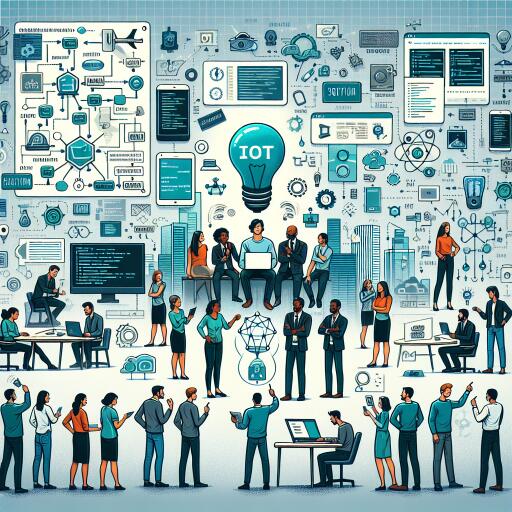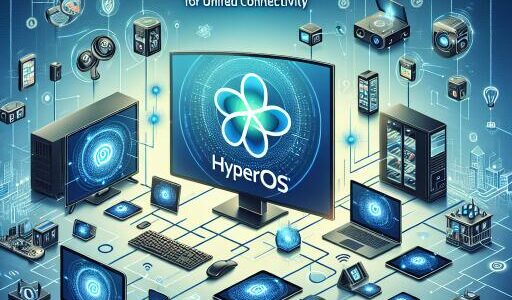Insider Secrets for Building Successful IoT Applications
The Internet of Things (IoT) has revolutionized connectivity, fostering an environment where devices and systems interact in unprecedented ways. This transformative technology has permeated industries such as healthcare, manufacturing, smart homes, and retail. The IoT market is poised for substantial growth, underscoring its rising adoption and the crucial role connected devices play in our lives.
Creating successful IoT applications involves establishing interconnected, context-aware systems where devices communicate seamlessly and share real-time data. To achieve this, understanding core components such as hardware integration and cloud infrastructure is vital.
Foundational Elements of IoT
The backbone of any IoT solution lies in its hardware—sensors, actuators, and embedded devices that gather and transmit data. Selecting the right cloud infrastructure is equally important for processing and storing the vast data volumes produced by these devices. A well-crafted, user-friendly interface is also essential for empowering users to navigate the system with ease.
Startups developing IoT solutions should leverage specialized services to streamline hardware selection, ensure smooth cloud connectivity, and design intuitive user interfaces. This approach simplifies the creation of scalable IoT solutions.
Key Considerations in IoT App Development
Success in IoT app development hinges on establishing a comprehensive set of functional and technical requirements early in the process. These requirements align the application with user needs, business objectives, and device capabilities, averting compatibility issues and performance bottlenecks.
The development journey begins with in-depth project discovery research, focusing on aligning business goals with user needs. This phase entails understanding the target audience, identifying their needs, wants, and challenges, and determining how the IoT solution can address these issues. A meticulously researched discovery phase shapes an app that is not only functional but user-centric, adding genuine value. It provides a framework supported by market research and technical feasibility analysis, ensuring a scalable, adaptable, and reliable final product.
Choosing the Right IoT Platform
Among the critical decisions in IoT development is selecting an appropriate platform, as it handles everything from device connectivity to data streams and security. A wise choice avoids scalability bottlenecks, performance issues, and high operational costs.
The right platform enables efficient data stream management without sacrificing performance, offering features like auto-scaling, real-time data processing, AI automation, and predictive analytics—all essential for business applications.
The Importance of Scalable Architecture
A robust architecture is essential for building an IoT application that accommodates an increasing number of connected devices, growing data values, and evolving business requirements without compromising performance. A scalable design facilitates effortless growth, adaptation to evolving needs, and high performance, which enhances reliability, efficiency, and cost-effectiveness.
Ensuring Security and Compliance
With countless connected devices transmitting sensitive data, security and compliance are paramount in IoT app development. Even minor vulnerabilities can lead to data breaches or cyberattacks. Thus, it’s vital to construct secure IoT applications with layers of protection: data encryption, firewalls, multi-factor authentication, and access control, safeguarding user data and device integrity.
Optimizing Connectivity and Energy Efficiency
For IoT devices, notably battery-operated ones like wearables and smart sensors, maintaining stable connectivity while minimizing power consumption is key. Efficient data transmission can be achieved via lightweight protocols like MQTT, CoAP, and BLE, which are designed for low bandwidth and power consumption.
Further, optimizing battery life involves reducing data transmission frequency, utilizing sleep modes, and employing energy-efficient hardware components.
Enhancing User Experience
Success in IoT isn’t only about functionality; it involves delivering smooth, intuitive, and engaging user experiences. Whether it’s smart home apps or industrial dashboards, users should intuitively navigate the platform. Effective IoT applications feature seamless user experiences and minimalist, well-designed interfaces.
Importance of Thorough Testing
Comprehensive testing ensures the reliability of IoT applications across diverse environments, devices, and network conditions. Conducting real-world scenario testing, compatibility testing, and simulating network conditions identifies potential failures, saving time and resources in later development stages.
Streamlining IoT Development with the Right Tools
Crafting an IoT application from the ground up can be complex, but employing the right tools—such as IoT development platforms, pre-built SDKs, APIs, and edge computing—can simplify the process. Platforms like AWS IoT Core streamline device management, data processing, and cloud integration, reducing the need for extensive back-end development.
Pre-built SDKs and APIs offer ready solutions for communication, authentication, and data transmission, allowing developers to concentrate on core functionalities. Implementing edge computing enhances security, reduces latency, and lowers bandwidth use.
By understanding the intricate balance of these components, IoT developers can build successful applications that not only meet user and business requirements but also adapt to the ever-evolving technological landscape.










